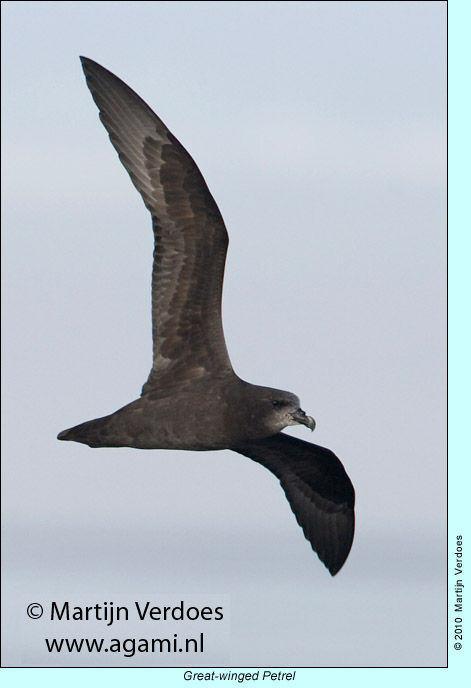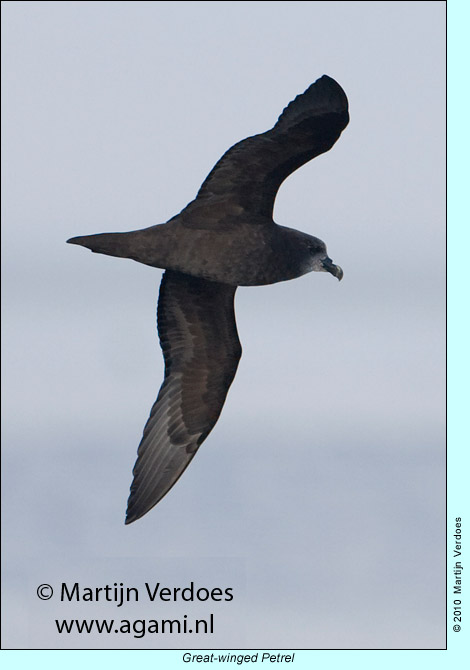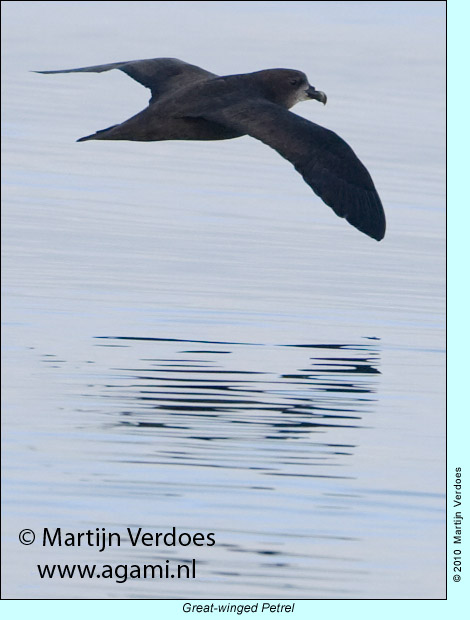Saturday September 18, 2010
 |
|
 |
 Our
only 12-hour trip of the year gets underway under the cover of darkness
at 5:30 a.m. We used to run 2 or 3 of these longer trips per year
but for some reason the last couple of years they've been a tough
sell. As it is today we've just made the minimum with 15 participants
signed on along with six of our leaders for a long day at sea. Our
only 12-hour trip of the year gets underway under the cover of darkness
at 5:30 a.m. We used to run 2 or 3 of these longer trips per year
but for some reason the last couple of years they've been a tough
sell. As it is today we've just made the minimum with 15 participants
signed on along with six of our leaders for a long day at sea.
Originally we hoped to venture offshore in search of a hard warm water
break but the sea surface temperature maps showed this to be well
beyond our reach in a 12-hour trip from Monterey. After some discussion
our captain Richard Ternullo and I concur that our best bet will be
to cross the bay and start the day working the series of sea canyons
north of Santa Cruz that the local skippers refer to as "the Fingers".
With the light coming up we begin seabirding in earnest around 6:45
a.m.
It is great starting the day in this area of Santa Cruz County right
off the bat. On the 8-hour trips it takes us an hour and a half to
get here. The birding is good from the outset with SOOTY and
PINK-FOOTED SHEARWATERS all around. Soon we're seeing lots
of ASHY STORM-PETRELS too, when spotter Todd Easterla calls
out our first LEAST STORM-PETREL.
At 8:45 we find ourselves directly over Cabrillo Canyon (36 49.342
N 122 19.90 W). I'm up in the top drive with our skipper when I hear
Todd Easterla yell the three most exciting words you will hear on
a pelagic trip, "STOP THE BOAT."
When I get to the back of the boat Todd is looking over at our 8 o'clock
and yelling for his daughter, our chummer Tayla, to get some fish
in the water.
Things are a bit chaotic as all of us try to get on the bird that
Todd and others are looking at. I grab the bottle of cod liver oil
we keep near the stern and pour some over the rail with one hand as
I kneel on the deck under the photographers with my bins in the other
hand, asking for directions of where we should be looking. I get on
the bird as it banks and flies right at us. The sound of whirring
digital cameras is music to my ears. With so few of us on board every
single person sees the bird and every photographer with a decent camera
gets a shot of it as it parallels our boat.
Our skipper and veteran seabirder Richard Ternullo steps out on deck
and pronounces it a GREAT-WINGED PETREL! He's the only one
on board who saw the second North American record that was seen in
Monterey Bay back on October 18, 1998. (The first record was from
the Cordell Bank in Marin County on Aug. 24, 1996.) This GWPE is the
third North American record of this Southern Hemisphere species.
(The AOU currently recognizes Great-winged Petrel but not Grey-faced,
which has long been considered a subspecies of Great-winged. The two
prior records from CA are thought to be Grey-faced (P. gouldi).
I'm not sure Great-winged has been formally split, though many authorities
recognize two species are involved -- and there appears to be good
reason to do so. But at this point, from an American perspective,
our bird is simply a Great-winged Petrel and we believe all characters
suggest the subspecies gouldi - Dan Singer pers. com.)
This was a true team effort to find this bird and credit goes to many
of those on board. Kenneth Petersen pointed out a pair of jaegers
harassing a bird in the distance but they were too far away to id.
He and Todd were trying to ascertain what kind of jaegers they might
be when their attention was drawn to the bird the jaegers were working
over. This was our petrel!
Needless to say we are an excited bunch of birders and there is a
lot of high fiving going around. Kenneth Petersen, the pelagic fanatic,
looks like the Cheshire cat with a smile from ear to ear.
Martijn Verdoes has a laptop with him and loads the images so we can
do some instant replay. Everyone agrees, "The bill looks huge!" We
are all convinced that this is indeed a GWPE.
And the day is just getting started! We push up to Ano Nuevo Canyon
but the fog turns us back so we follow our track back and are surprised
to find the area that had been so birdy an hour and a half before
is relatively bird free. Where did they all go?
We do some searching for the storm-petrel flocks and find them in
the same area I have flagged on my GPS from last year. We make sure
everyone gets good looks at the BLACK STORM-PETRELS mixed in
with the flocks of ASHIES.
We head back into the bay to try to escape the marine layer and as
we find the sun we pass through an area with a great deal of bird
activity due to the balls of krill near the surface. I dip net some
up for our passengers to sample. "Tastes like shrimp!"
This area has so much activity we decide to take a second pass through
and we find a TUFTED PUFFIN (MTY) that circles the boat twice.
Up ahead we spot some surface activity and before we know it we are
interacting with a pod of Transient type KILLER WHALES.
A second TUFTED PUFFIN is found as we are looking at BLUE WHALES
before the clock runs out and we head back to the dock.
Thanks go out to our spotters Dan Singer, Bruce Elliot, Martijn Verdoes
and Todd Easterla and to our little chummer girl Tayla Easterla.
Here is the eBird report
for our trip compiled by Dan Singer:
| Location: Offshore pelagic (SCZ Co.) |
| Observation date: 9/18/10 |
Notes: Monterey Seabirds
trip on the Pt. Sur Clipper with Richard Ternullo, skipper; Roger
Wolfe; Todd Easterla; Ken Petersen; Martijn Verdoes; Dan Brown;
and Sacramento Audubon. We had hoped to travel offshore to the
"albacore grounds" but the temperature break was 90+ nm offshore
and unreachable. We opted instead to explore offshore canyons
north of Santa Cruz to Ano Nuevo. Turned out to be a fortuitous
change of plans! The seas were flat, often mirror-like, and there
was virtually no wind all day. We spent hours motoring through
areas with no birds and/or dense fog. Despite this we had a nice
variety of species, good looks at many storm-petrels, and a mega-rarity.
|
Number of species:
|
|
17
|
 |
|
| |
Black-footed Albatross |
|
7 |
|
|
| |
Great-winged Petrel (gouldi) |
|
1 |
|
ID to subspecies presumptive, but based on photos and prior
records, I believe it is a good fit. This was a heavy, long-winged,
dark brown Pterodroma with a very stout bill, seen over Cabrillo
Canyon SW of the city of Santa Cruz. Initially seen being harassed
by two Pomarine Jaegers by Todd Easterla and Ken Petersen, the
bird flew close enough to the boat for many good photos. If accepted
by the CBRC this will be the third record for California and,
I think, the North Pacific basin. Feedback received so far from
other experienced seabirders has been positive. |
| |
Pink-footed Shearwater |
|
115 |
|
|
| |
Buller's Shearwater |
|
12 |
|
|
| |
Sooty Shearwater |
|
60 |
|
|
| |
Ashy Storm-Petrel |
|
237 |
|
|
| |
Black Storm-Petrel |
|
8 |
|
|
| |
Least Storm-Petrel |
|
3 |
|
Seen well in direct comparison with Ashy Storm-Petrels.
Small, very short-tailed, deep wingbeats. |
| |
Pectoral Sandpiper |
|
1 |
|
Flew over the boat heading south. |
| |
Western Gull |
|
10 |
|
|
| |
California Gull |
|
8 |
|
|
| |
Common Tern |
|
3 |
|
|
| |
Arctic Tern |
|
1 |
|
|
| |
Pomarine Jaeger |
|
6 |
|
|
| |
Parasitic Jaeger |
|
11 |
|
|
| |
Long-tailed Jaeger |
|
3 |
|
|
| |
jaeger sp. |
|
12 |
|
|
| |
Cassin's Auklet |
|
35 |
|
|
| |
Rhinoceros Auklet |
|
50 |
|
|
| |
|
|
|
|
|
Marine Mammals:
California Sea Lion
Steller Sea Lion
Northern Right Whale Dolphin
Pacific White-sided Dolphin
Killer Whale/Orca
Blue Whale
Fin Whale
Humpback Whale
Fish:
Blue Shark
Mola Mola/Ocean Sunfish
Roger Wolfe for Monterey
Seabirds

|
